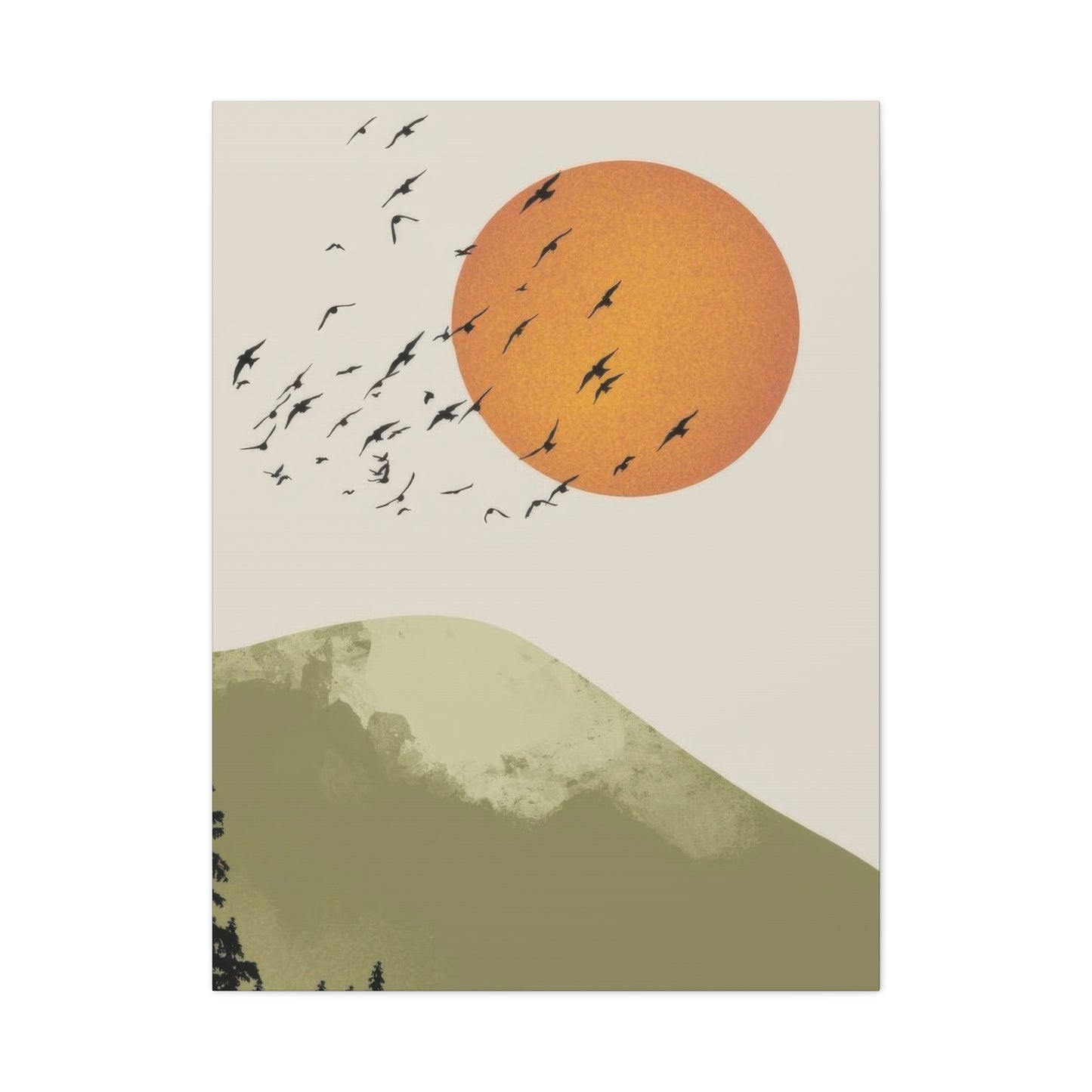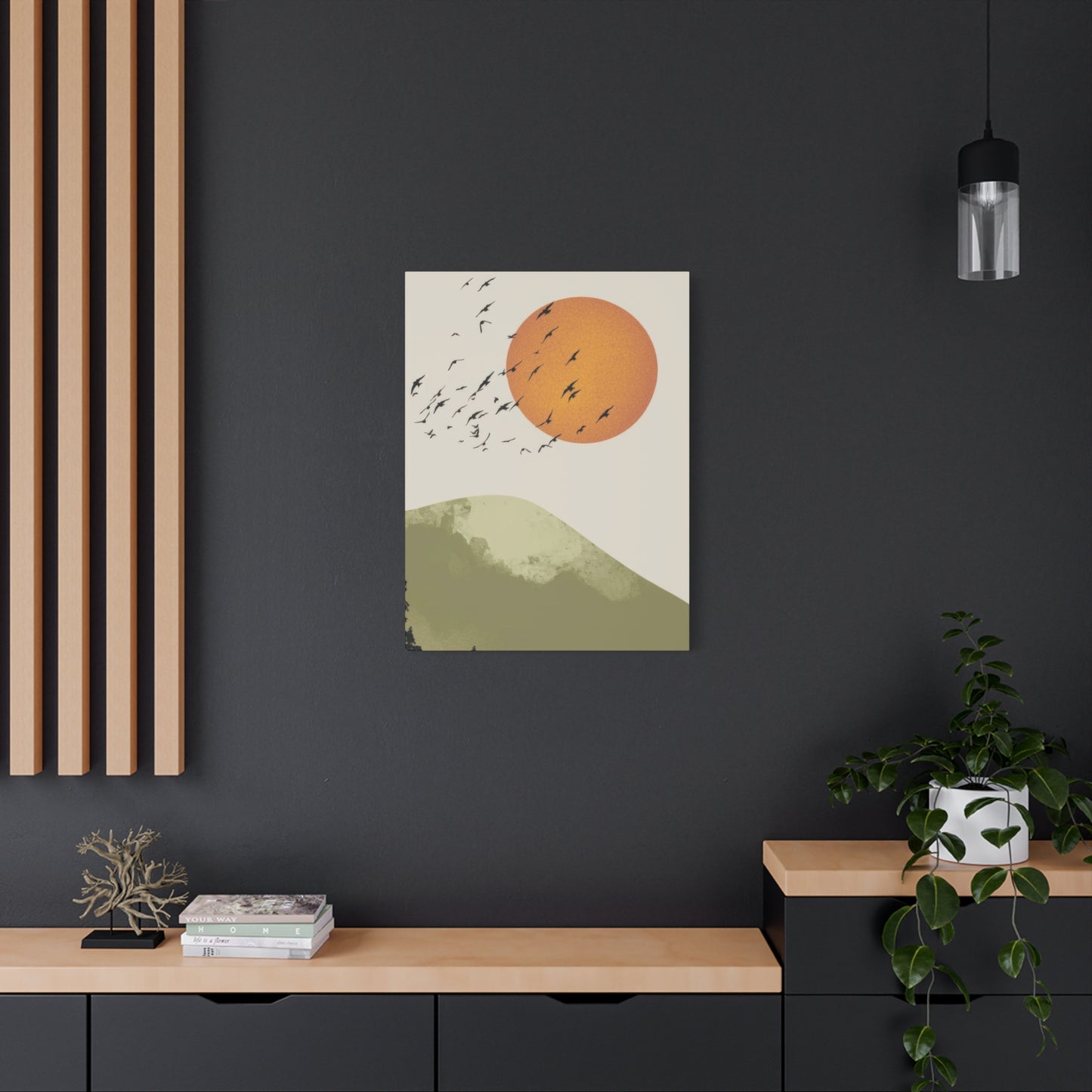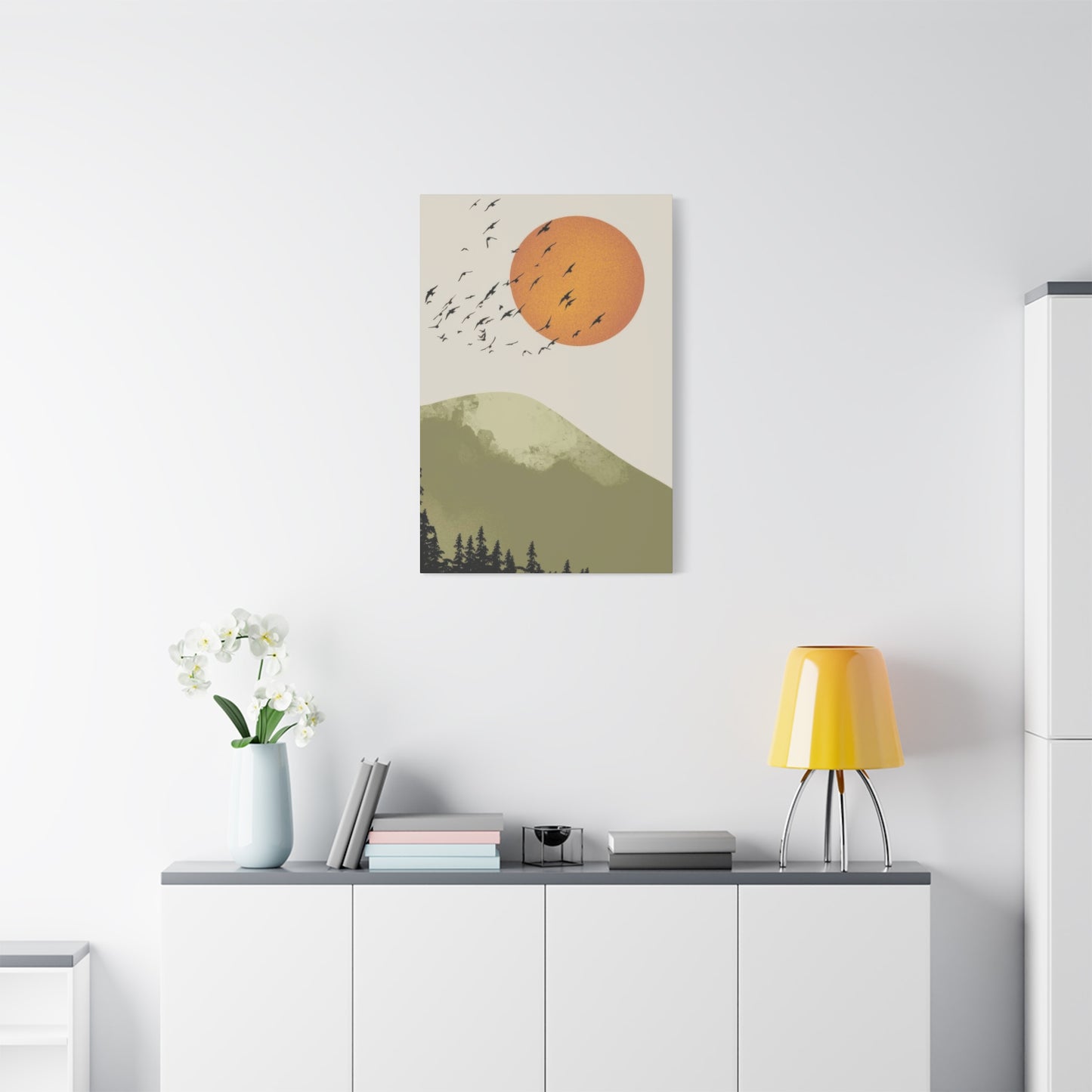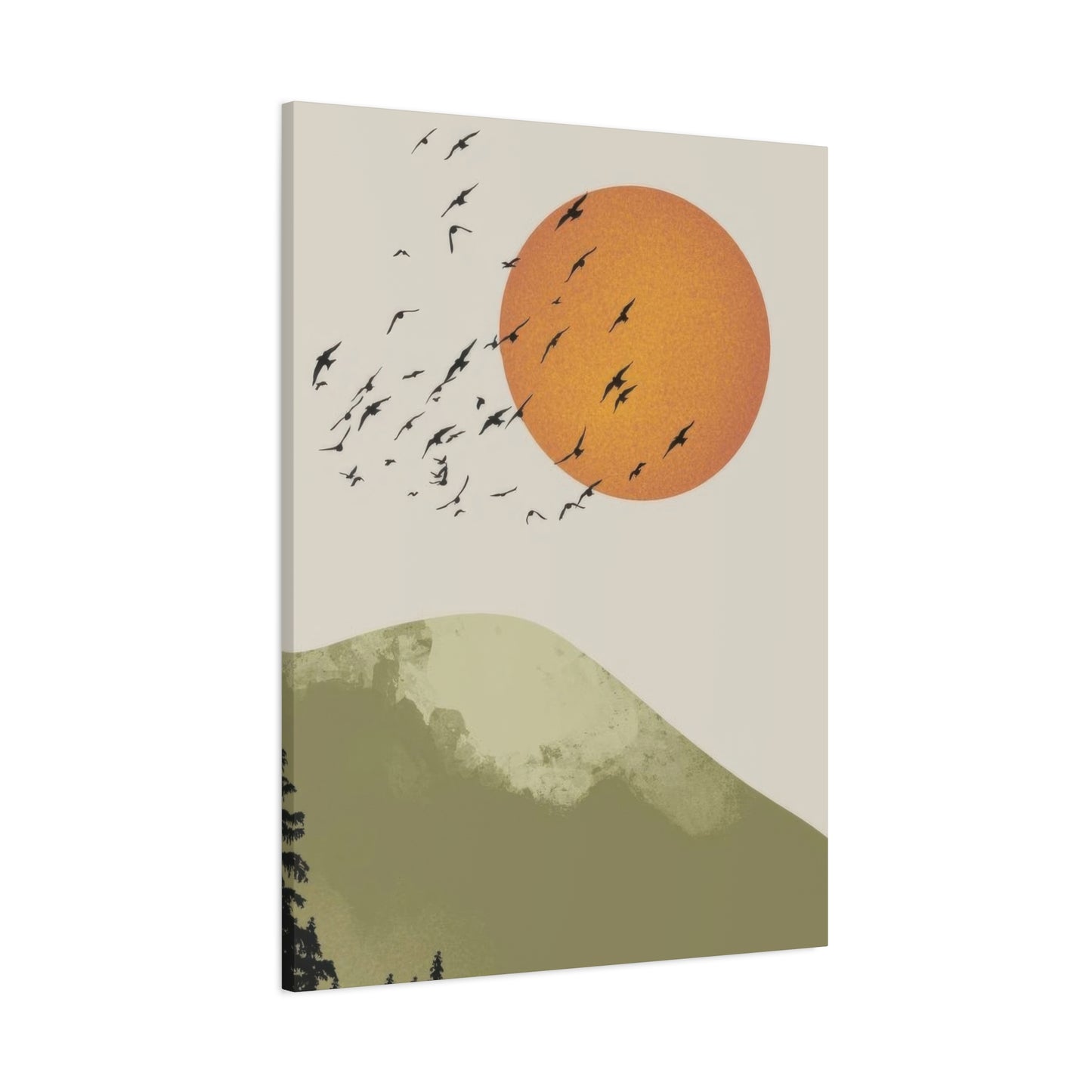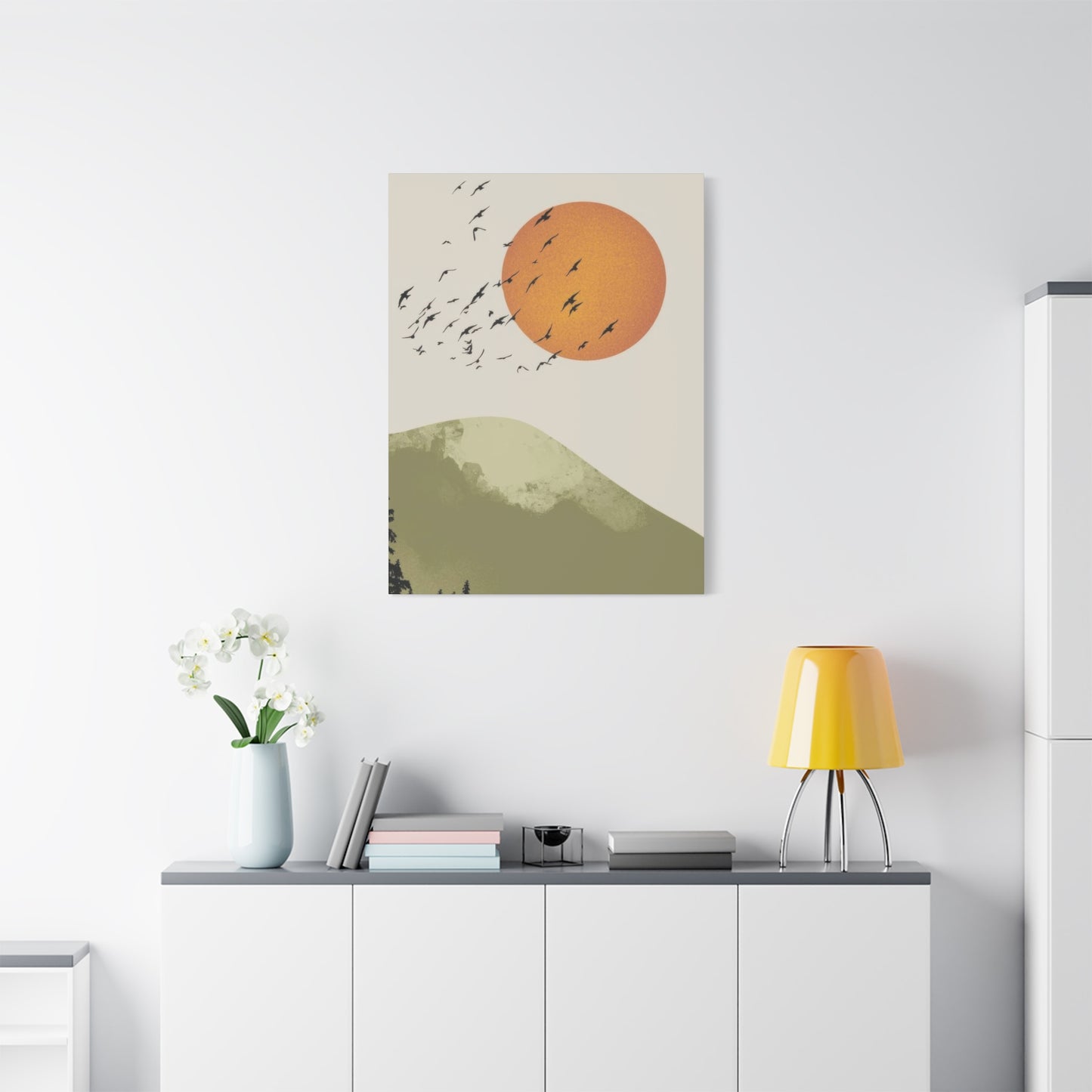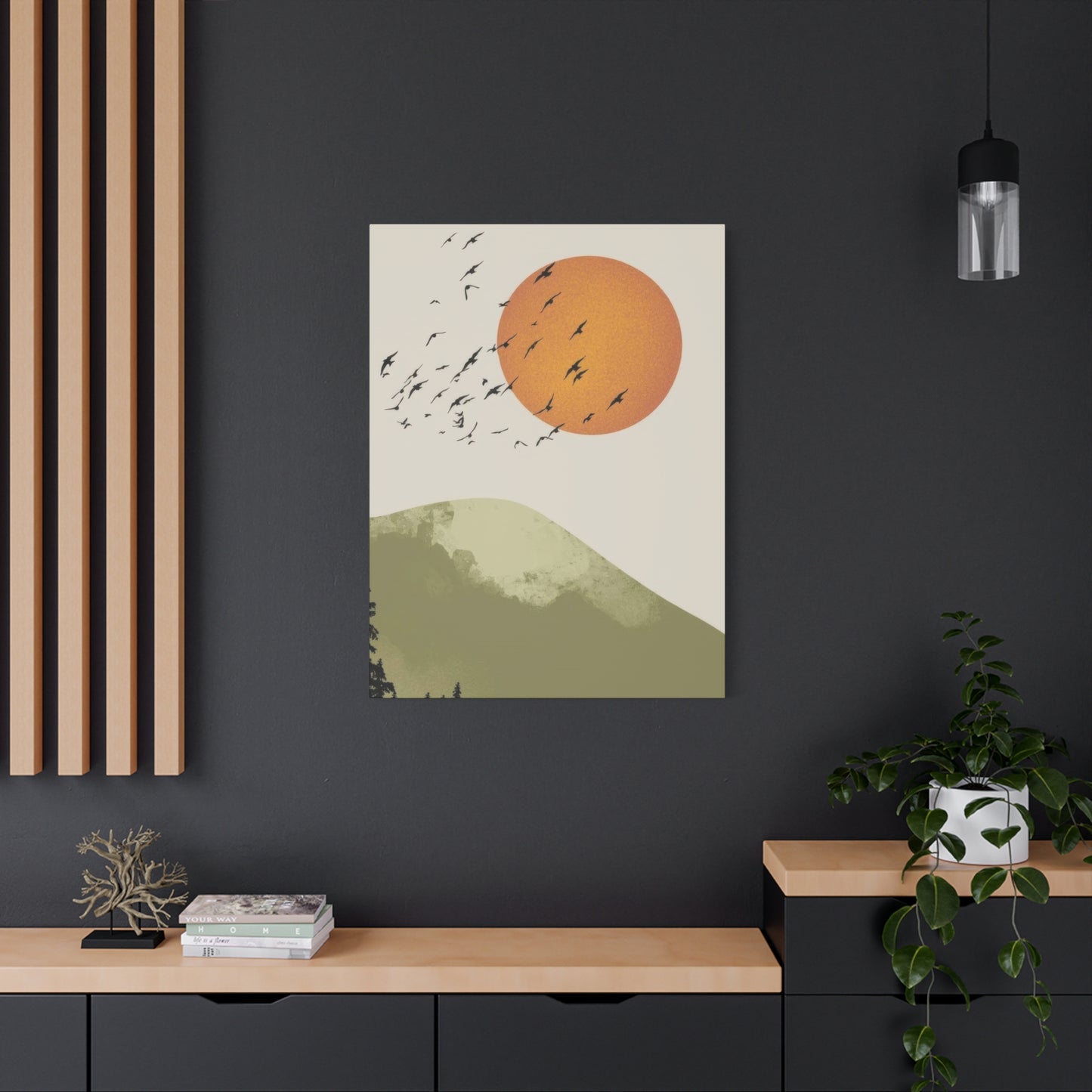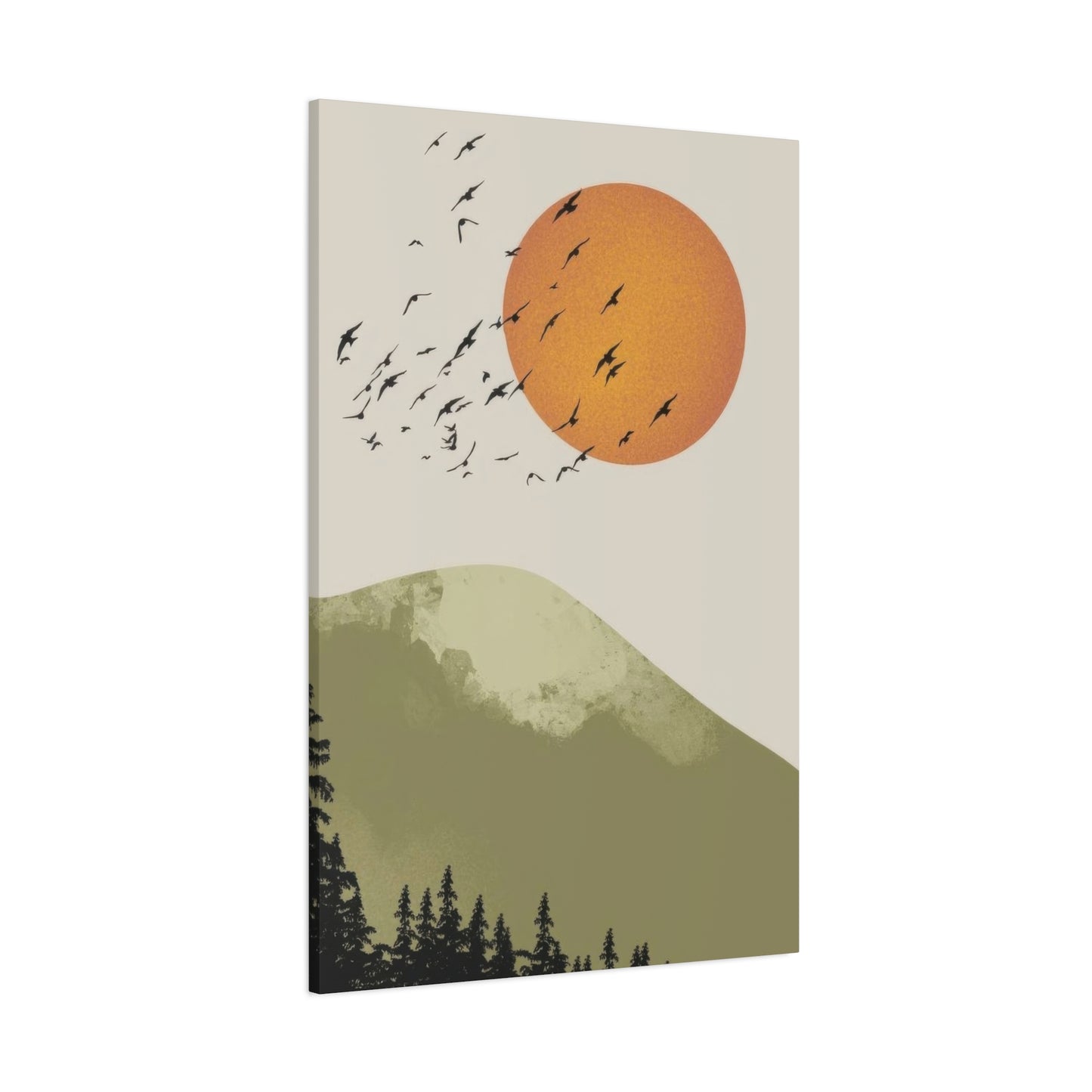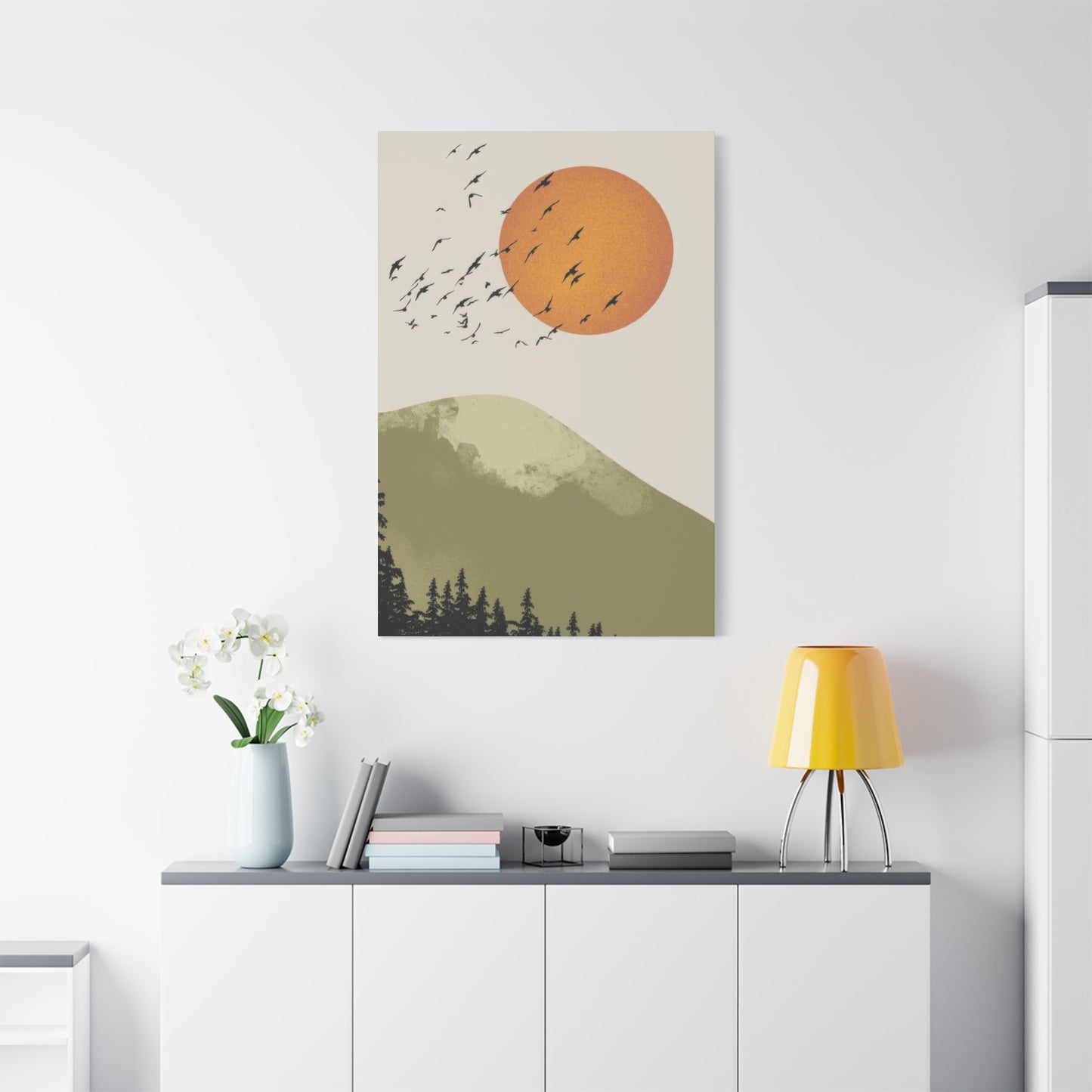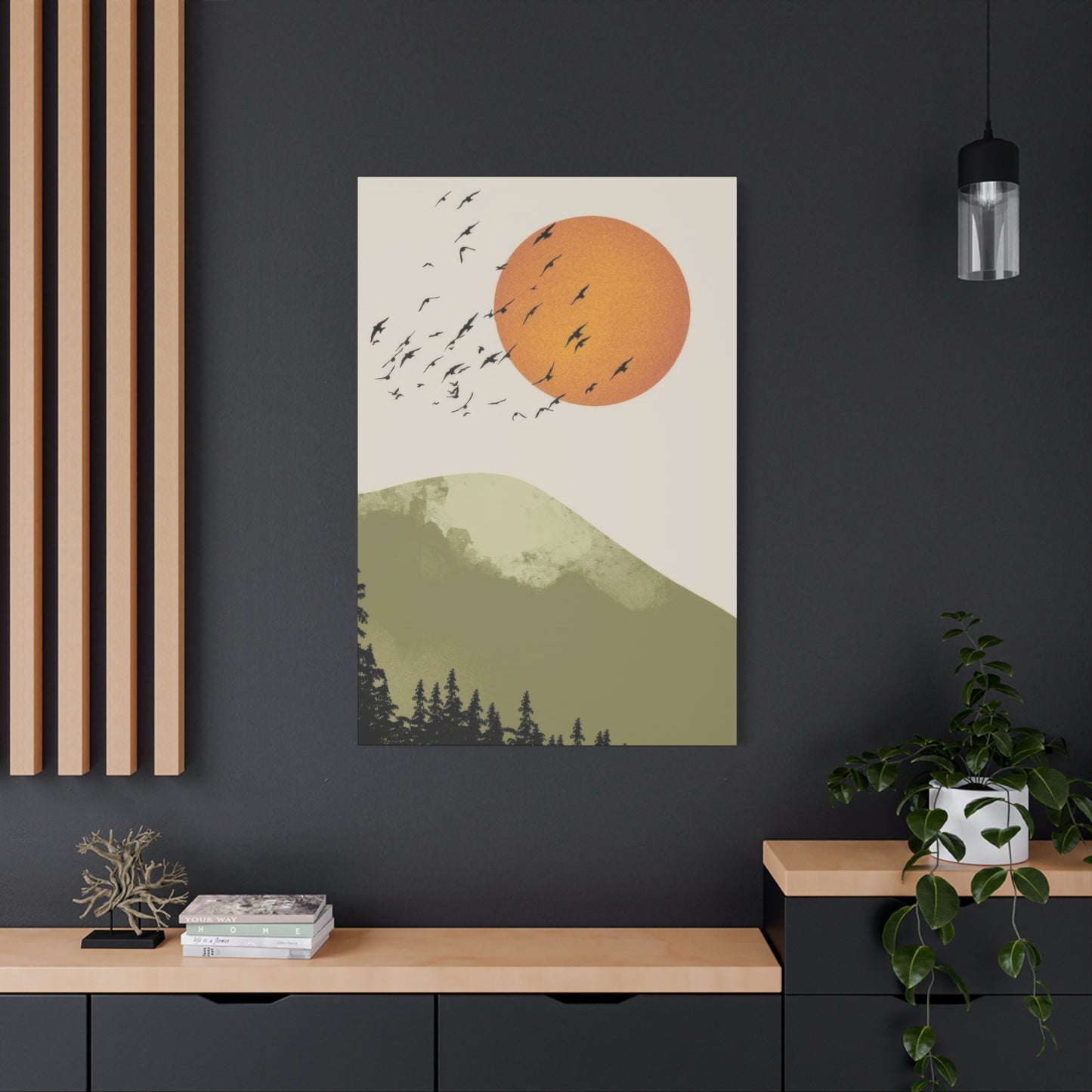The Soaring Beauty of Birds: Why "Birds Fly By Earthy Wall Art" is the Perfect Blend of Nature and Elegance
The integration of nature-inspired elements into interior spaces has become increasingly popular among homeowners and designers seeking to create calming, organic environments. Earthy wall art featuring birds in flight represents one of the most compelling ways to bring the serenity of the natural world indoors. This comprehensive exploration delves into the multifaceted world of avian-themed decorative pieces, examining their aesthetic appeal, psychological benefits, design versatility, and transformative impact on living spaces.
The connection between humans and birds spans millennia, with these winged creatures symbolizing freedom, hope, and transcendence across countless cultures. When captured in artistic form and displayed on interior walls, these representations serve as daily reminders of nature's beauty and resilience. The combination of birds in flight with earthy tones creates a harmonious balance that resonates with contemporary design sensibilities while honoring timeless natural aesthetics.
Earthy color palettes encompassing warm browns, soft taupes, muted greens, and gentle terracottas provide the perfect backdrop for avian imagery. These grounded hues evoke the soil, stone, and vegetation of natural habitats, creating cohesive visual narratives that transport viewers to outdoor environments. The juxtaposition of dynamic bird movements against stable, earth-toned foundations generates visual interest while maintaining overall tranquility.
Understanding the Appeal of Avian Art in Contemporary Interiors
The fascination with bird imagery in home decoration stems from deep-rooted psychological and aesthetic preferences. Birds represent the ultimate expression of freedom, their ability to soar through skies embodying aspirations that resonate universally with human experience. When homeowners select decorative pieces featuring these creatures, they unconsciously invite these symbolic qualities into their living environments.
Contemporary interior design increasingly emphasizes biophilic principles, recognizing that human wellbeing improves through connections with natural elements. Research in environmental psychology demonstrates that exposure to nature imagery, including representations of birds and natural landscapes, reduces stress levels and enhances cognitive function. Incorporating avian-themed artwork into residential or commercial spaces thus serves practical psychological purposes beyond mere aesthetic enhancement.
The visual dynamics of birds in flight offer exceptional compositional opportunities for artists and decorators. The curved trajectories of wings, the graceful arcs of bodies moving through space, and the implied movement captured in static images create focal points that draw the eye and energize otherwise static wall surfaces. These dynamic elements prevent spaces from feeling stagnant while maintaining the peaceful qualities associated with nature imagery.
Earthy color schemes complement avian subjects particularly effectively because they mirror the natural relationships found in outdoor environments. Birds inhabit landscapes composed of earth, vegetation, and stone, so representing them against backgrounds incorporating these colors creates instinctive visual harmony. This color coordination satisfies deep aesthetic preferences rooted in evolutionary biology, where recognition of natural patterns indicated safe, resource-rich environments.
The versatility of bird-themed decoration allows integration across diverse design styles. Minimalist interiors benefit from simple silhouettes of single birds against neutral backgrounds, while maximalist spaces accommodate more complex compositions featuring multiple species and elaborate natural settings. Traditional decor embraces classical ornithological illustrations, whereas contemporary aesthetics favor abstract or stylized interpretations of avian forms.
Psychological Benefits of Nature-Inspired Decorative Elements
The presence of nature-themed artwork in interior spaces generates measurable improvements in occupant wellbeing. Studies examining the impact of natural imagery on psychological states consistently demonstrate reductions in anxiety, improvements in mood, and enhanced recovery from mental fatigue. These benefits extend specifically to representations of birds, which carry additional symbolic associations with freedom and transcendence.
Environmental psychology research indicates that even indirect exposure to natural elements through artwork provides restorative experiences comparable to actual nature contact. When individuals cannot access outdoor environments due to urban living constraints, weather conditions, or physical limitations, interior nature representations serve as valuable substitutes. Avian imagery proves particularly effective because birds themselves symbolize the connection between earthbound existence and the freedom of open skies.
The earthy color palettes typically accompanying bird-themed artwork contribute additional psychological benefits. Warm browns and soft greens have demonstrated calming effects on nervous system responses, lowering heart rates and reducing cortisol levels associated with stress. These physiological responses occur automatically, operating below conscious awareness to create environments that feel inherently comfortable and safe.
Cognitive restoration theory suggests that natural scenes allow mental processes to recover from directed attention fatigue. Modern life demands constant focused attention on specific tasks, depleting cognitive resources and leading to mental exhaustion. Nature imagery provides opportunities for soft fascination, where attention engages effortlessly without depletion. Bird artwork facilitates this restorative attention by offering interesting visual elements that captivate without overwhelming cognitive capacity.
The symbolic dimensions of bird imagery contribute to psychological impacts beyond purely visual effects. Throughout human history, birds have represented spiritual messengers, souls in transition, and divine inspiration across countless cultural traditions. These deep symbolic associations operate at subconscious levels, imbuing spaces with meanings that resonate with fundamental human concerns about existence, purpose, and transcendence.
Selecting the Perfect Avian Artwork for Your Space
Choosing appropriate bird-themed decorative pieces requires consideration of multiple factors including room function, existing color schemes, spatial dimensions, and personal aesthetic preferences. The selection process benefits from systematic evaluation of how specific artwork will interact with surrounding elements to create cohesive, harmonious environments.
Scale represents a critical consideration when selecting wall decorations. Large spaces with high ceilings accommodate oversized pieces that make bold statements and serve as primary focal points. Conversely, intimate rooms benefit from smaller works or grouped collections that maintain appropriate proportions relative to surrounding furnishings. The size of bird representations within compositions also matters, with larger individual birds creating dramatic impact while flocks of smaller birds generate different energy through repetition and movement patterns.
Color coordination between artwork and existing interior palettes ensures visual harmony. Earthy tones naturally complement numerous design schemes, but attention to specific hues within the earth tone spectrum optimizes integration. Rooms featuring cool grays and blues pair well with artwork emphasizing similar cool earth tones like slate and sage, while warm beige and cream environments harmonize with terracotta, sienna, and golden brown artistic palettes.
The artistic style of bird representations should align with overall design aesthetics. Photographic realism suits spaces emphasizing natural authenticity and traditional sensibilities. Watercolor interpretations bring softness and fluidity appropriate for romantic or cottage-style interiors. Abstract geometric bird forms complement modern minimalist spaces, while folk art styles enhance eclectic or bohemian environments. Matching artistic approach to design context prevents visual discord and strengthens overall aesthetic coherence.
Subject matter specificity influences emotional tone and symbolic communication. Single majestic birds like eagles or hawks convey strength and focused determination, while groupings of smaller songbirds suggest community and joyful energy. Migratory species carry associations with journey and transformation, whereas nesting birds evoke home, security, and nurturing. Considering these symbolic dimensions ensures selected artwork communicates desired emotional qualities.
Creating Cohesive Gallery Walls with Bird-Themed Collections
Gallery walls featuring multiple coordinated pieces offer opportunities to develop complex visual narratives around avian themes. These curated collections allow greater expression of personal style while providing flexibility to adapt arrangements as tastes evolve. Successful gallery walls balance unity and variety, creating cohesive impressions while maintaining visual interest through controlled diversity.
Establishing a unifying element provides the foundation for effective collections. This connective thread might be a consistent color palette across all pieces, a repeated artistic medium, a specific bird species appearing throughout works, or a shared theme like birds in different seasons. The unifying element creates coherence, allowing the eye to recognize relationships between individual pieces and perceive the arrangement as intentional rather than random.
Varying sizes and orientations within collections prevents monotony while maintaining balance. Mixing horizontal and vertical orientations, incorporating square formats alongside rectangles, and including different scales creates dynamic visual rhythm. The arrangement process benefits from laying pieces on the floor to experiment with different configurations before committing to wall placement. Photographing various arrangements facilitates comparison and selection of the most pleasing composition.
Spacing between individual pieces significantly impacts overall impressions. Closer spacing creates unified fields that read as single large elements from distance, appropriate when seeking substantial visual weight or filling large wall expanses. Wider spacing emphasizes individual pieces while maintaining collection coherence, better suited to smaller walls or when showcasing particularly striking individual works. Consistent spacing intervals throughout arrangements generally produce more polished, intentional appearances.
Frame selection contributes substantially to gallery wall success. Consistent framing across all pieces creates formal, cohesive impressions particularly suited to traditional or minimalist spaces. Varied frames in complementary styles and finishes generate eclectic, collected-over-time aesthetics appropriate for bohemian or transitional interiors. When mixing frame styles, maintaining some common element like finish color or profile width prevents arrangements from appearing chaotic.
Incorporating Metal Bird Sculptures in Three-Dimensional Displays
While two-dimensional artworks dominate wall decoration discussions, three-dimensional metal sculptures offer compelling alternatives that interact with light and space in unique ways. Metal bird sculptures, particularly those finished in earthy bronze, copper, or rusted patinas, provide dimensional interest while maintaining organic aesthetic connections.
Metal avian forms cast dramatic shadows that change throughout the day as natural light shifts, adding temporal dynamics to static decorative elements. This changing shadow play creates living artwork that never appears exactly the same, maintaining visual interest through constant subtle variation. Strategic placement near windows or light sources maximizes these shadow effects, transforming walls into canvases for ongoing light performances.
The textural qualities of metal sculptures provide tactile dimensions absent from printed or painted works. Hammered surfaces catch light differently than smooth finishes, creating visual complexity through physical dimension. Patinated metals develop unique colorations impossible in two-dimensional media, with verdigris greens and rust oranges adding earthy tones that complement natural design schemes while introducing authentic materiality.
Combining metal sculptures with traditional artwork creates layered, multidimensional displays that engage viewers from multiple perspectives. A metal bird emerging from a painted canvas background, or positioned to appear flying across a wall-mounted photograph, generates trompe-l'oeil effects that surprise and delight. These dimensional layers add sophistication to decorative schemes while maintaining thematic cohesion around avian subjects.
Installation considerations for metal pieces differ from standard artwork hanging. Weight becomes significant with solid metal sculptures, requiring appropriate wall anchors rated for substantial loads. Some designs feature integrated hanging systems while others need mounting brackets or specialized hardware. Planning installation requirements during the selection process prevents complications and ensures secure, level mounting that safely supports pieces over time.
Exploring Different Artistic Mediums for Avian Wall Decor
The medium through which birds are represented significantly influences aesthetic impact and environmental suitability. Understanding characteristics of different artistic approaches helps in selecting pieces that best serve specific design intentions and practical requirements.
Canvas prints offer affordability and versatility, reproducing photographic or painted bird imagery on stretched fabric surfaces. Modern printing technology achieves remarkable color accuracy and detail, making high-quality bird photography and digital art accessible at reasonable price points. Canvas provides subtle texture that adds dimension without the glare issues sometimes associated with framed glass surfaces. The lightweight nature of canvas prints simplifies installation and repositioning as design preferences evolve.
Wooden art pieces bring organic materiality that reinforces nature themes through physical substance. Carved, burned, or painted birds on reclaimed wood slices create rustic, earthy presentations particularly appropriate for farmhouse, cabin, or lodge aesthetics. The natural grain patterns and color variations in wood add unique character to each piece, ensuring genuine one-of-a-kind qualities. Wood also provides excellent bases for mixed media approaches, combining painting, burning, and dimensional elements within single compositions.
Ceramic and pottery tiles featuring bird imagery offer durability and easy maintenance suited to humid environments like bathrooms and kitchens where other mediums might deteriorate. Glazed ceramic surfaces resist moisture damage while providing rich, saturated colors and subtle surface variations characteristic of handcrafted pottery. Individual tiles can be displayed singly as small accent pieces or arranged in grids to create larger composite images.
Textile wall hangings including woven tapestries, embroidered pieces, and fabric collages introduce softness and textural warmth. Fiber arts featuring birds connect to long textile traditions spanning cultures and centuries, carrying artisanal qualities and handcrafted authenticity. The dimensional texture of woven or embroidered surfaces creates subtle depth while absorbing sound, contributing acoustic benefits alongside aesthetic enhancement. Natural fiber textiles in earthy tones complement sustainable, eco-conscious design philosophies.
Photographic prints under glass provide crisp detail and color accuracy ideal for showcasing the remarkable beauty of actual birds in natural habitats. High-quality nature photography captures moments impossible to render in other mediums, from the iridescent shimmer of hummingbird feathers to the fierce intensity of raptor eyes. Glass surfaces protect images while enabling easy cleaning, maintaining clarity for decades with minimal care. Matting options allow customization of presentation to match surrounding decor.
Understanding Color Psychology in Earthy Avian Art
The specific earthy tones selected for bird-themed artwork significantly influence psychological responses and spatial perceptions. Understanding color psychology principles enables strategic selection of hues that support desired emotional atmospheres and functional goals for different spaces.
Warm brown tones ranging from light tans to deep chocolates create feelings of stability, reliability, and comfort. These colors psychologically ground spaces, reducing feelings of anxiety and promoting relaxation. In bedrooms, warm brown backgrounds behind bird imagery enhance sleep-conducive environments, while in living areas they foster welcoming, nurturing atmospheres ideal for family gathering. Browns also recede visually, making walls feel farther away and spaces appear larger.
Terracotta and clay oranges introduce warmth and energy while maintaining earthiness. These hues stimulate without overwhelming, making them appropriate for spaces intended to energize like home offices or exercise areas. Terracotta tones complement skin tones particularly well, making them flattering choices for portrait-adjacent spaces like bedroom vanity areas. Combined with bird imagery, these colors suggest desert landscapes or sun-warmed earth, evoking specific natural environments.
Muted sage and olive greens connect directly to vegetation and growth, bringing refreshing qualities associated with renewal and vitality. Green tones reduce eye strain and promote concentration, making them excellent choices for workspaces or study areas. The calming properties of green also benefit bedrooms and meditation spaces. Birds depicted against green backgrounds suggest forest or meadow habitats, creating specific ecosystem associations that influence spatial character.
Soft grays from dove to charcoal provide neutral sophistication while maintaining connection to natural stone and weathered wood. Gray backgrounds allow bird subjects to command full attention without competing color distraction. These neutrals work exceptionally well in modern minimalist spaces where color restraint supports clean, uncluttered aesthetics. Gray's adaptability allows it to appear warm or cool depending on surrounding colors, providing unusual flexibility in various design contexts.
Cream and beige tones offer warmth and luminosity, reflecting light to brighten spaces while maintaining organic naturalness. These lighter earth tones make small rooms appear more spacious and dark spaces feel more open. Birds rendered in cream and beige palettes create soft, peaceful impressions appropriate for bedrooms, nurseries, and spaces dedicated to relaxation. The subtle nature of these hues allows layering of pattern and texture without visual chaos.
Seasonal Considerations in Bird-Themed Decorative Displays
Birds' intimate connection to seasonal cycles offers opportunities to refresh and adapt decorative schemes throughout the year. Thoughtfully rotating or layering bird artwork according to seasons maintains visual interest while celebrating natural temporal rhythms.
Spring-themed bird displays emphasize nesting behaviors, egg symbolism, and the arrival of migratory species returning from winter grounds. Robins, bluebirds, and swallows represent classic spring species, their imagery evoking renewal and fresh beginnings. Soft pastels mixed with earthy greens and browns capture the season's character as earth awakens from dormancy. Cherry blossom branches or spring wildflowers incorporated into compositions enhance seasonal specificity.
Summer avian art celebrates abundance and vitality through vibrant songbirds in full plumage amid lush vegetation. Hummingbirds hovering at flowers, orioles in fruit trees, and goldfinches on sunflowers capture summer's energetic essence. Richer, more saturated earth tones reflect summer's warmth, with golden yellows and deep greens predominating. Compositions emphasizing movement and activity mirror the busy liveliness of summer natural environments.
Autumn bird imagery often features migrating flocks, harvest associations, and preparation for winter. Canada geese in V-formations, blackbirds gathering in large groups, and hawks riding thermal currents embody fall's transitional character. Color palettes shift toward russets, golds, and deeper browns reflecting autumn foliage and harvested fields. Incorporating elements like wheat stalks, pumpkins, or autumn leaves strengthens seasonal resonance.
Winter bird representations focus on hardy species remaining in cold climates, emphasizing survival and resilience. Cardinals against snow, owls in bare branches, and chickadees at feeders capture winter's stark beauty. Cooler earth tones including slate grays and deep forest greens reflect winter's palette, while occasional warm accents suggest the comfort of shelter from harsh conditions. Minimalist compositions with ample negative space mirror winter's stripped-down simplicity.
Regional Bird Species and Their Cultural Significance in Art
Different geographical regions harbor distinct bird species that carry specific cultural meanings and aesthetic associations. Understanding these regional connections helps select imagery that resonates personally or reflects heritage connections.
North American species like bald eagles, cardinals, and blue jays appear frequently in decorative art throughout the continent. Bald eagles carry powerful patriotic symbolism in American contexts while representing spiritual importance in Indigenous traditions. Cardinals' year-round presence and brilliant red plumage make them beloved subjects associated with visiting spirits and divine messages. Blue jays' intelligence and boldness translate to representations of communication and fearlessness.
European species including robins, swallows, and owls feature prominently in Western artistic traditions. European robins differ from American robins and carry distinct cultural associations, traditionally representing hope and renewal. Swallows' migratory patterns inspired maritime traditions where their sighting indicated land proximity, thus symbolizing safe return home. Owls' associations with wisdom and mystery in Greek traditions continue influencing Western interpretive frameworks.
Asian bird symbolism, particularly in Chinese and Japanese cultures, attributes specific meanings to cranes, peacocks, and phoenixes. Cranes represent longevity, fidelity, and good fortune, frequently appearing in wedding decorations. Peacocks symbolize beauty, pride, and immortality, their magnificent plumage inspiring countless artistic representations. The mythical phoenix embodies rebirth and renewal, transcending actual species to represent transformative power.
African species like secretary birds, crowned cranes, and lilac-breasted rollers bring exotic beauty and connections to African ecosystems. The secretary bird's distinctive appearance and terrestrial hunting habits make it striking subject matter. Crowned cranes' elegant courtship dances and regal bearing inform their symbolic associations with grace and celebration. The lilac-breasted roller's spectacular colors inspire vibrant artistic interpretations celebrating natural beauty.
Australian birds including cockatoos, kookaburras, and emus represent unique endemic species found nowhere else globally. Cockatoos' intelligence, long lifespans, and distinctive crests make them charismatic subjects. Kookaburras' distinctive laughing calls and role in Aboriginal dreamtime stories imbue them with cultural significance. Emus' flightless nature and terrestrial lifestyle present different compositional opportunities compared to flying species.
Integrating Bird Art into Specific Room Functions
Different rooms serve distinct purposes requiring tailored approaches to decorative enhancement. Understanding how bird-themed art supports specific room functions optimizes both aesthetic and practical outcomes.
Living room bird displays establish welcoming, conversational atmospheres for gathering spaces where families and guests interact. Larger statement pieces above sofas or fireplaces create focal points that anchor seating arrangements. The dynamic quality of birds in flight energizes social spaces while earthy tones maintain calming warmth. Groupings of smaller pieces on adjacent walls provide visual interest without overwhelming primary focal points.
Bedroom bird art promotes restful, restorative environments conducive to quality sleep. Gentler compositions featuring nesting birds or peaceful perching positions rather than dynamic flight communicate tranquility and security. Soft, muted earth tones support sleep physiology by avoiding stimulating bright colors. Positioning artwork where it's visible from bed provides pleasant focal points for morning awakening and evening relaxation.
Kitchen and dining area avian decor connects to themes of nourishment and gathering. Bird feeders symbolically extend hospitality concepts, while harvest associations link birds to food abundance. Smaller pieces or tile work suit kitchen scale and withstand cooking moisture and temperature variations. Dining areas accommodate larger works that provide conversational topics during meals while avoiding food imagery that might influence appetite disproportionately.
Home office bird imagery supports focus and creativity in workspaces. Hawks and eagles communicate determination and vision, supporting professional mindsets. Smaller songbirds introduce uplifting energy preventing workspace dullness. Positioning bird art where visible during brief breaks from screens provides microbreak focal points that rest eyes while maintaining environmental interest. Earthy backgrounds prevent distraction while maintaining aesthetic appeal.
Bathroom bird decorations bring nature into personal care spaces, extending biophilic benefits to morning and evening routines. Water-resistant mediums like ceramic tiles or sealed wood withstand humidity without deterioration. Waterfowl species like herons, ducks, or kingfishers create thematic consistency with bathroom water associations. Small-scale pieces suit typical bathroom dimensions without overwhelming limited wall space.
The Environmental Sustainability of Nature-Inspired Decor Choices
Selecting bird-themed decorative elements aligns naturally with environmental consciousness when approached thoughtfully. Understanding sustainability dimensions of various options enables choices that reflect values while achieving aesthetic goals.
Reclaimed and recycled materials provide eco-friendly substrates for bird artwork. Reclaimed barn wood, salvaged metal, and recycled canvas reduce demand for virgin resources while adding authentic aged character. Many artists specialize in creating bird representations on repurposed materials, combining environmental responsibility with rustic aesthetic appeal. Supporting these artists encourages sustainable practices within creative industries.
Plant-based and natural materials including hemp canvas, organic cotton, and sustainably harvested wood minimize environmental impact compared to synthetic alternatives. Natural fiber textiles biodegrade at end-of-life rather than persisting in landfills indefinitely. Wood certified by responsible forestry programs ensures decorative pieces don't contribute to deforestation or habitat destruction threatening actual bird populations.
Local and regional artists reduce transportation emissions while supporting community economies. Purchasing bird art from nearby creators minimizes shipping distances and associated carbon footprints. Local artists often depict regional bird species, adding authentic geographical specificity while supporting preservation awareness for local ecosystems. Developing relationships with regional artists also enables commissioning custom pieces reflecting personal preferences.
Digital printing technologies have improved environmental profiles through reduced chemical usage and waste generation compared to traditional reproduction methods. Modern eco-solvent and latex inks eliminate volatile organic compounds while achieving color quality matching conventional inks. Digital processes also enable on-demand production, preventing overproduction waste from unsold inventory sitting in warehouses.
Conservation-supporting purchases directly benefit bird protection efforts when portions of proceeds fund habitat preservation and research. Many wildlife artists designate percentages of sales to conservation organizations working to protect species and ecosystems. Selecting works from conservation-minded creators transforms decorative purchases into meaningful environmental contributions beyond aesthetic enhancement.
Historical Evolution of Bird Imagery in Decorative Arts
Understanding the rich history of avian representation in decorative arts provides context for contemporary applications while inspiring creative approaches. Birds have fascinated artists across cultures and millennia, resulting in diverse interpretive traditions.
Ancient Egyptian art extensively featured birds, with species like the sacred ibis, falcon, and vulture carrying divine associations. These representations served religious and symbolic functions beyond decoration, connecting earthly and spiritual realms. The precision of Egyptian bird depictions demonstrates sophisticated observation skills despite stylized execution. This tradition established lasting connections between birds and transcendent themes.
Medieval European manuscripts contained elaborate bird marginalia and illuminations, with peacocks, phoenixes, and doves appearing in religious contexts. These decorative elements served didactic purposes, conveying moral and spiritual lessons through symbolic associations. The fantastic creatures alongside realistic species reflected beliefs about exotic distant lands and supernatural realms. Manuscript traditions influenced subsequent decorative arts including tapestries and painted furniture.
Asian artistic traditions, particularly Chinese and Japanese painting, developed sophisticated bird-and-flower genres emphasizing seasonal beauty and philosophical concepts. These compositions balanced realistic observation with expressive brushwork, capturing essential character rather than photographic detail. The minimalist aesthetics of sumi-e ink painting demonstrated how suggestion and negative space could powerfully communicate bird presence. These approaches continue influencing contemporary design.
Victorian-era ornithology combined scientific illustration with aesthetic appeal, producing detailed bird images serving both educational and decorative functions. Audubon's ambitious documentation of North American birds resulted in images prized for scientific accuracy and artistic beauty. These illustrations decorated middle-class homes, reflecting status through displayed knowledge and aesthetic sophistication. This tradition established expectations for detailed realism in nature art.
Modern and contemporary periods embraced abstraction and stylization, interpreting birds through diverse artistic movements from Art Nouveau's flowing organic forms to mid-century modern's geometric simplifications. Each movement reimagined avian subjects through its aesthetic philosophy, demonstrating birds' adaptability as artistic motifs. This diversity of approach provides contemporary decorators unprecedented variety in selecting pieces matching personal aesthetic preferences.
Combining Bird Art with Living Plant Elements for Enhanced Biophilia
Integrating living plants with bird-themed artwork creates powerful biophilic environments that engage multiple senses while reinforcing nature connections. This combination amplifies psychological benefits beyond either element alone.
Strategic plant placement near bird artwork creates visual continuity between representations and living organisms. Trailing pothos or ivy positioned to appear growing from painted branches blur boundaries between art and reality. This layering technique generates depth and dimension while strengthening overall nature themes. The living movement of plants swaying in air currents complements static bird imagery, adding temporal dynamics to displays.
Species selection can echo habitats suggested by bird artwork. Tropical birds pair naturally with lush ferns, philodendrons, and orchids recreating rainforest environments. Desert species like roadrunners or quail coordinate with succulents and cacti reflecting arid ecosystems. Temperate songbirds complement common houseplants like snake plants and peace lilies representing moderate climate vegetation. These habitat-consistent pairings create cohesive environmental narratives.
Plant containers and stands provide opportunities to extend earthy color schemes from artwork into three-dimensional space. Terracotta, ceramic, and natural wood planters echo the earth tones in bird representations while adding textural variety. The organic shapes of vessels contrast with rectilinear artwork frames, creating visual interest through form variation. Coordinating container colors with artwork palette ensures unified rather than competing elements.
Vertical garden installations or living walls adjacent to bird-themed artwork create dramatic impact in spaces with sufficient natural light or supplemental grow lights. These extensive plant displays transform walls into living canvases that change daily as plants grow and respond to care. Birds depicted appearing to perch on or fly among actual living vegetation create illusions of integrated environments. This approach suits large spaces with modern aesthetics and strong commitments to biophilic design.
Care considerations ensure plant health doesn't compromise artwork preservation. Adequate spacing prevents water damage from watering accidents or normal transpiration humidity. Positioning artwork away from direct plant contact avoids physical damage from touching foliage or climbing growth. Regular monitoring catches potential issues before they affect valuable decorative pieces. Selecting low-maintenance plant varieties reduces care demands while maintaining green presence.
Lighting Strategies to Enhance Bird-Themed Wall Displays
Proper illumination dramatically influences artwork perception and impact. Strategic lighting design showcases bird imagery while contributing to overall spatial ambiance and functionality.
Picture lights mounted directly above or below artwork provide focused illumination that emphasizes specific pieces while creating gallery-like presentations. These dedicated fixtures ensure consistent visibility regardless of ambient conditions, protecting artwork from sunlight fading while maintaining visibility. Adjustable models allow fine-tuning of light direction and intensity, accommodating different artwork sizes and surface finishes. Modern LED picture lights provide energy efficiency and minimal heat generation protecting artwork from thermal damage.
Track lighting offers flexible solutions for illuminating multiple pieces or reconfiguring as displays change. Individual fixtures positioned along tracks direct light precisely where needed, with adjustable angles accommodating varied artwork sizes and arrangements. This system works particularly well for gallery walls with multiple bird-themed pieces requiring coordinated illumination. Dimming capabilities allow adjusting light levels for different times and activities.
Recessed ceiling fixtures provide ambient illumination that highlights artwork without visible hardware competing for attention. When positioned appropriately relative to wall displays, recessed lights create clean, modern aesthetic while effectively illuminating artwork. Adjustable trim options enable directing light at appropriate angles to minimize glare on glass-covered pieces. This approach suits minimalist interiors where visible fixtures would compromise clean aesthetics.
Natural light positioning maximizes existing illumination while requiring awareness of potential fading risks. Artwork positioned perpendicular to windows receives illumination without direct sun exposure that accelerates deterioration. Sheer curtains or UV-filtering window films protect artwork while admitting natural light. The changing quality of natural light throughout days and seasons creates dynamic display conditions where artwork appearance subtly shifts, maintaining ongoing visual interest.
Accent lighting using table or floor lamps supplements overhead illumination while creating layered lighting schemes that add depth and sophistication. Positioning lamps where light washes across nearby bird artwork provides soft, indirect illumination that reduces harsh shadows and glare. This approach particularly benefits evening ambiance when overhead fixtures might create overly bright or stark conditions. Warm-toned LED bulbs enhance earthy color palettes while supporting relaxing atmospheres.
Custom and Commissioned Bird Art for Personalized Spaces
Commissioning original artwork enables creating pieces perfectly tailored to specific spaces, color schemes, and personal preferences. Custom bird art offers unique advantages over mass-produced alternatives while supporting individual artists.
The commission process typically begins with consultation where artists learn about spatial requirements, style preferences, and desired bird species. Providing room photographs, paint samples, and existing decor images helps artists understand context and create compatible pieces. Discussing symbolic intentions or personal meanings guides artists in selecting appropriate subjects and compositional approaches. This collaborative process ensures final pieces align with visions while benefiting from artistic expertise.
Size customization solves challenges of finding appropriately scaled pieces for unusual spaces. Extremely narrow walls, unconventionally shaped areas, or very large expanses often defeat standard artwork searches. Commissioning allows specifying exact dimensions ensuring perfect fit without compromise. Artists can adjust compositions specifically for intended orientations and proportions, creating works designed for their ultimate locations.
Color matching enables precise palette coordination with existing interiors. Providing paint chips or fabric samples allows artists to incorporate specific colors ensuring seamless integration. This precision proves particularly valuable when decorating around unique or custom colors difficult to match with off-the-shelf artwork. Artists can balance dominant colors with complementary accents supporting overall design harmony.
Subject personalization creates meaningful connections through depicting personally significant species. Featuring birds from meaningful locations, representing anniversaries or life events, or honoring deceased loved ones transforms artwork into tangible memories. State birds, species from ancestral homelands, or birds associated with special experiences add layers of personal significance beyond aesthetic appeal. These connections create emotional relationships with artwork that generic pieces cannot replicate.
Investment considerations position original artwork as appreciating assets beyond disposable decor. While commissioned pieces involve higher initial costs than mass-produced alternatives, original artwork retains and potentially increases value over time. Supporting living artists during early or mid-career stages offers opportunities to acquire works affordably that may substantially appreciate as artists gain recognition. Even absent financial appreciation, the uniqueness and personal meaning of commissioned pieces provide enduring value transcending monetary measures.
Maintaining and Preserving Bird-Themed Artwork Over Time
Proper care extends artwork lifespan while maintaining visual quality and protecting financial investment. Understanding appropriate maintenance practices for different mediums ensures long-term enjoyment.
Dust accumulation dulls appearances and potentially damages surfaces over time. Regular gentle dusting using soft, lint-free cloths or feather dusters removes particulates before they adhere firmly. Glass-covered pieces tolerate light moisture for streak-free cleaning, while canvas and unprotected surfaces require dry-only approaches. Avoiding abrasive materials or harsh chemicals prevents surface damage or color loss. Establishing routine cleaning schedules prevents heavy accumulation requiring more aggressive intervention.
Sunlight exposure causes fading and deterioration across most artistic mediums. Positioning artwork away from direct sunlight preserves color vibrancy and prevents material breakdown. When sun exposure proves unavoidable, UV-filtering glazing or window films reduce damage without completely blocking beneficial natural light. Regular rotation of pieces prevents uneven fading in mixed light conditions. Monitoring for early fading signs enables relocating artwork before substantial damage occurs.
Humidity control prevents moisture damage including mold growth, paper warping, and adhesive failure. Maintaining indoor relative humidity between forty and sixty percent protects most artwork types. Avoiding placement in high-humidity areas like bathrooms or over humidifiers prevents moisture exposure. Dehumidifiers in problematic spaces protect entire art collections while preventing humidity damage throughout homes. Signs of moisture damage including warping, staining, or musty odors require immediate attention preventing minor issues from becoming major damage.
Temperature stability protects artwork from expansion-contraction cycles causing physical stress. Avoiding placement above heat sources like radiators or fireplaces prevents thermal damage. Consistent temperatures between sixty-five and seventy-five degrees Fahrenheit suit most artwork. Attic or basement storage subjects artwork to extreme temperature fluctuations risking serious damage. Climate-controlled storage protects pieces during temporary removal from display.
Professional conservation addresses damage beyond routine maintenance capabilities. Consulting conservators for significant tears, stains, fading, or structural issues ensures proper restoration rather than well-intentioned but potentially harmful DIY attempts. Conservators possess specialized knowledge, materials, and techniques for reversible repairs that don't compromise artwork integrity. While conservation involves expense, professional intervention often costs less than replacing damaged irreplaceable pieces.
Incorporating Educational Elements Through Bird Species Identification
Bird-themed artwork can serve educational purposes, particularly in family homes or educational environments. Strategic selection and presentation foster learning about ornithology, ecology, and conservation.
Labeling artwork with species names, scientific classifications, and basic natural history information transforms decorative pieces into teaching tools. Discrete plaques mounted near artwork or incorporated into custom framing provide identification without compromising aesthetics. Including information about habitat requirements, migration patterns, or conservation status encourages awareness of ecological relationships and environmental challenges. This approach particularly benefits children's spaces where casual learning opportunities support developing environmental literacy.
Field guide integration creates interactive learning experiences where viewers identify species, compare illustrated and photographic representations, and investigate behavioral details. Maintaining bird identification references near artwork collections enables spontaneous investigation when curiosity strikes. This combination of artistic appreciation and scientific investigation deepens engagement while supporting multiple learning styles. The practice particularly suits family common areas where various age groups naturally gather.
Seasonal documentation projects engage families in tracking bird presence throughout the year. Recording which species appear in local environments during different seasons, noting arrival and departure dates, and photographing visitors creates ongoing engagement with both artwork and living birds. Comparing artwork depictions with actual bird observations highlights artistic interpretation choices while sharpening observation skills. These activities transform static decoration into launching points for outdoor nature engagement.
Conservation messaging incorporated into artwork display raises awareness of threats facing bird populations including habitat loss, climate change, and pollution. Selecting pieces from conservation-minded artists or donating portions of artwork budgets to protection organizations demonstrates tangible commitment beyond awareness. Discussing conservation themes when guests comment on bird artwork spreads awareness while modeling environmental values. This approach transforms homes into platforms for advocacy and education.
Regional relevance enhances educational value by connecting artwork to local ecosystems and species. Featuring birds actually present in surrounding environments enables direct observation comparison between artistic representation and living examples. Learning about local species fosters place-based environmental awareness and encourages habitat protection in immediate communities. Local bird populations also change seasonally and annually, providing dynamic learning opportunities as species presence shifts.
Combining Modern Technology with Traditional Bird Art Displays
Emerging technologies offer innovative approaches to displaying and interacting with bird-themed artwork, creating dynamic experiences that traditional static displays cannot match.
Digital frames displaying rotating collections of bird imagery provide variety within single physical footprints. High-resolution screens reproduce artwork with impressive fidelity while enabling instant changes matching moods, seasons, or whims. Subscription services provide access to extensive image libraries featuring thousands of bird photographs and paintings. This approach particularly suits individuals who enjoy frequent aesthetic change without physical artwork rotation logistics.
Augmented reality applications overlay digital bird animations onto physical spaces through smartphone or tablet screens. These apps enable virtual birds flying through rooms, perching on furniture, or interacting with physical objects. While not replacing traditional artwork, augmented reality supplements static displays with interactive elements particularly engaging for children. Educational AR apps combine entertainment with learning, providing species information, bird songs, and behavioral demonstrations.
Conclusion:
In conclusion, "Birds Fly By Earthy Wall Art" captures the essence of nature’s beauty in a way that is both serene and sophisticated, offering the perfect balance of natural inspiration and refined elegance. This style of wall art celebrates the grace of birds in flight, emphasizing freedom, movement, and the natural world, while grounding these themes in earthy tones and understated design elements. The result is a captivating piece that not only enhances the visual appeal of any room but also evokes a deeper emotional connection to the beauty of the earth and its creatures.
The soaring beauty of birds has long been a symbol of freedom, transcendence, and the interconnectedness of life. Birds in flight represent the possibility of boundless exploration and personal growth. By incorporating these themes into wall art, "Birds Fly By Earthy Wall Art" invites homeowners to embrace the sense of freedom that nature offers, even in the confines of their own homes. The soft, flowing lines of the birds, paired with earthy color palettes like muted greens, browns, and beiges, bring a sense of tranquility and balance to any space, creating an atmosphere that is both calming and inspiring.
What makes this particular style of art stand out is its ability to evoke a feeling of serenity without being overly simplistic. Unlike more traditional nature-based art that might feature detailed landscapes or bold wildlife imagery, "Birds Fly By Earthy Wall Art" often employs minimalist forms and subtle tones to convey a sense of stillness and elegance. The birds themselves are often portrayed in mid-flight, creating a sense of motion and life, while the earth-toned background provides a grounding, stable foundation. This pairing of energy and calm creates a dynamic, yet peaceful visual experience that is ideal for modern homes seeking both beauty and balance.
Another reason why "Birds Fly By Earthy Wall Art" has become increasingly popular is its versatility in complementing various interior design styles. Whether your home embraces a modern, minimalist approach, a bohemian flair, or a more rustic, nature-inspired theme, this style of wall art seamlessly fits into any décor scheme. The earthy tones and soft designs blend effortlessly with wooden furniture, natural textures like linen and cotton, and a range of color palettes, from deep neutrals to vibrant jewel tones. This adaptability makes it a perfect choice for a variety of spaces, from living rooms and bedrooms to dining areas and offices.
At its core, "Birds Fly By Earthy Wall Art" taps into a universal longing for a deeper connection to nature. In a world that is becoming increasingly urbanized and disconnected from the natural environment, artwork that features birds in flight offers a momentary escape. It reminds us of the vastness of the sky, the freedom that flight represents, and the inherent beauty of the natural world that surrounds us. This connection to nature is especially meaningful in today’s fast-paced world, where many people are seeking ways to bring calm and mindfulness into their daily lives.
Moreover, birds are often seen as symbols of hope, renewal, and transformation. The image of birds flying can symbolize the potential for change and personal growth, making "Birds Fly By Earthy Wall Art" not just a decorative piece, but also an inspirational one. It encourages the viewer to reflect on their own journey, embracing the idea of rising above challenges and soaring toward new horizons. This emotional depth adds an additional layer of meaning to the artwork, making it not only visually pleasing but also deeply resonant.
Ultimately, "Birds Fly By Earthy Wall Art" is the perfect blend of nature and elegance, capturing the fluidity and grace of birds while grounding them in the peaceful, calming hues of the earth. It celebrates the timeless beauty of flight and the natural world, offering a serene focal point in any room. Whether you’re drawn to its minimalist design, its connection to nature, or its symbolic depth, this style of art invites a sense of peace, hope, and connection to the world outside. As home décor continues to evolve toward more organic, nature-inspired themes, "Birds Fly By Earthy Wall Art" stands as a timeless expression of beauty, balance, and the graceful freedom of the natural world.



















